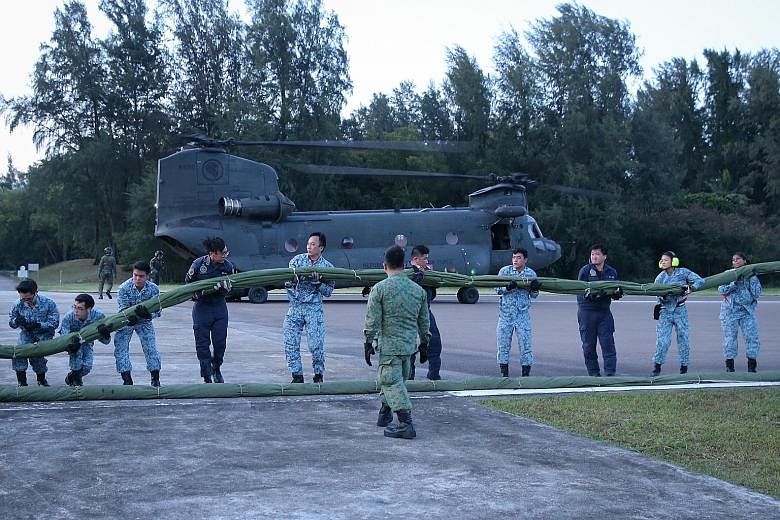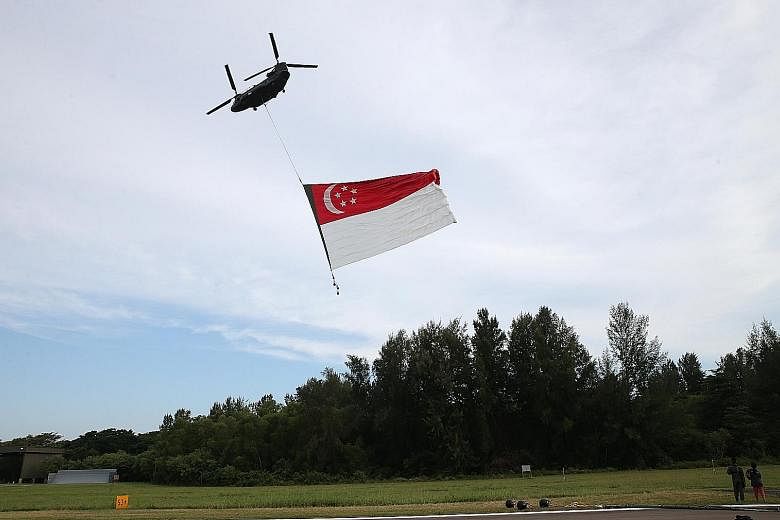When the opening chords of Majulah Singapura are struck at this year's National Day Parade, the audience can expect to see the state flag being flown past the National Stadium before making its way across the city's southern coast.
It will be the first time that the state flag flypast is taking this route, and those who are watching the National Day Parade at home will also be able to see the breathtaking vistas during the flypast, which will be televised.
Preparations involve a team of about 300 active and operationally ready national servicemen. The task of rolling up the 27m x 18m flag takes 25 people about two hours to complete.
While only one flag will be seen during the actual flypast, back-ups are prepared in case of damage, with rolled flags delivered to Pulau Sudong, Paya Lebar Air Base and Sembawang Air Base.
The task of rigging the 1,247kg flag to the helicopter is also a tricky one - with ballasts, cable slings and a release rope attached to it.
Close coordination ensures that the rolled flag unfurls fully and remains in good condition when the CH-47D Chinook helicopter carrying it leaves the air base .
Chinook pilot Liao Ming Hao, 35, said that one of the key challenges of staging the flypast is the precision of the timing.
"Having to arrive there within seconds of the stipulated time means that throughout the route, I need my flight crew to constantly advise me whether I'm early or late," said Lieutenant-Colonel Liao.
This is made even more difficult by the fact that the pilot is unable to see the flag and thus relies on instructions from the aircrew specialist about when to fly faster or maintain speed.
"If the speed increases or reduces, the flag tends to fold at certain portions," said Second Warrant Officer Vijaikumar, 42.
Another critical part of the process takes place during the pick-up of the flag. As the aircrew specialist, 2WO Vijaikumar looks through a hatch in the middle of the aircraft to monitor the flag and make sure that it has been properly attached to the helicopter.
"Before the flag is actually picked up... my heart beats very fast because at the end of the day, it is still our national flag," he said. "When we pick it up and the flag unfurls, the sense of pride and honour... is very hard to explain in words."
WATCH THE VIDEO
Teamwork to hook up giant flag at http://str.sg/45MS



